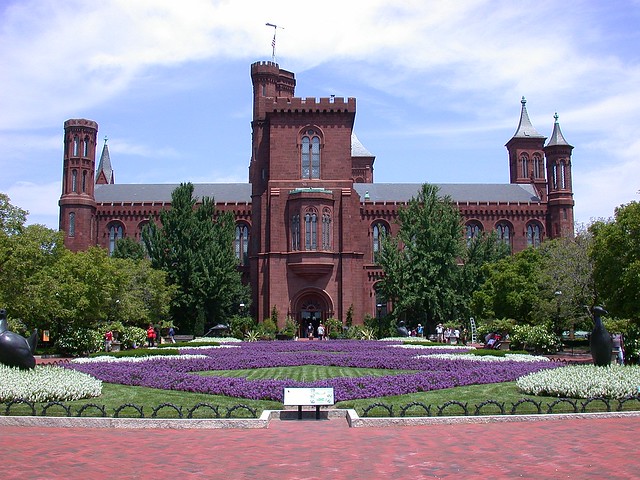
Parterre garden in front of the Smithsonian Castle
[Third in a series on Smithsonian Gardens; introduction here, part 1 here, part 2 here]
I took a walk through the Smithsonian's Enid A. Haupt Garden a few days ago and found it still going strong in mid-October. That stroll reminded me that I still had a set of photos from July to upload that I took for a series of blog posts on Smithsonian Gardens. I wrote up the Butterfly Habitat and Urban Bird Habitat Gardens, and the Mary Livingston Ripley Garden, but I kept putting off the Haupt Garden. Nestled between Independence Avenue, the Smithsonian "Castle", the Freer Gallery and the Arts and Industries Building, this is the largest of the Smithsonian's gardens on the National Mall, and I'll admit I felt a bit intimidated! The Haupt Garden is actually a series of connected gardens that contrast strongly in character, altogether covering 4 acres. Most of this is planted over the Smithsonian Quadrangle or "Quad", a large underground complex of office and museum space. The Haupt Garden is thus a giant roof garden, and although it was installed only after the Quad was completed in 1985, it looks like it's been there since the Castle itself was built.
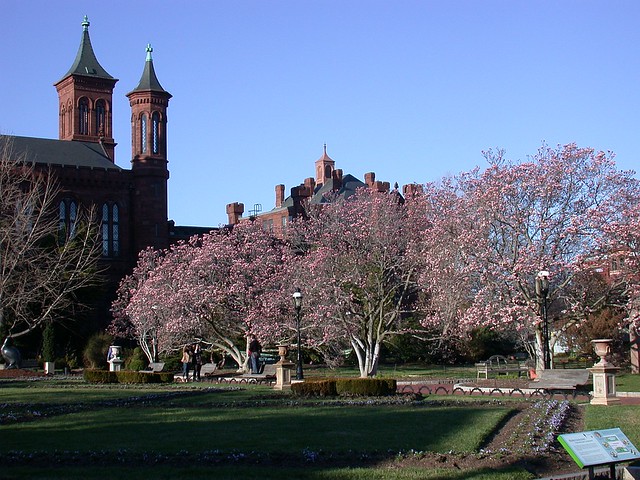
Haupt Garden, March 2014
The garden is named after its benefactor, publisher and philanthropist Enid Annenberg Haupt, "the greatest patron American horticulture has ever known," who made extremely generous donations to this and several other gardens, including the New York Botanical Garden and the American Horticultural Society's River Farm. The most visible, and probably most-photographed, of the Haupt gardens is the formal parterre garden directly in front of the Castle, but adjoining gardens on either side offer more privacy and seclusion. Among these are the Moongate Garden, Fountain Garden, and a tropical walkway alongside the Freer Gallery of Art. Tropical plants are used freely throughout the gardens, one reason why I like them so much!
The parterre is different every year, and this year, four large sculptures representing extinct birds are on display as part of the Lost Bird Project (with a fifth in the Urban Bird Habitat at the National Museum of Natural History). There's little I can say that will do justice to these gardens so for the most part, I'll let my photos speak for themselves. I've tried to select the best but this is just a fraction of the photos I took; please visit my Flickr album to see the rest: Smithsonian Haupt Garden 2014.
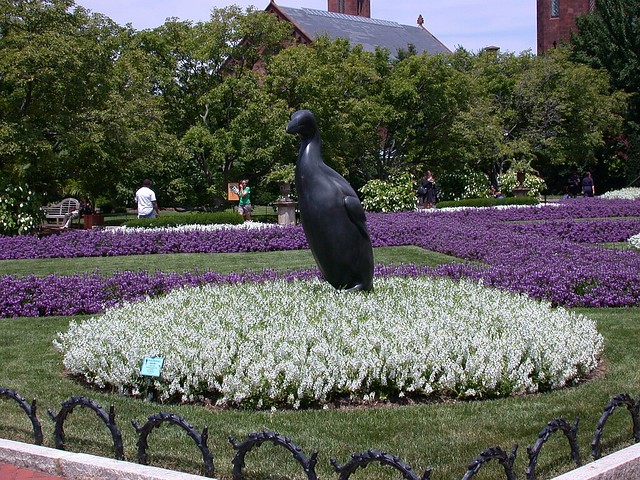
Great Auk, Lost Bird Project

Container garden at the entrance to the Castle
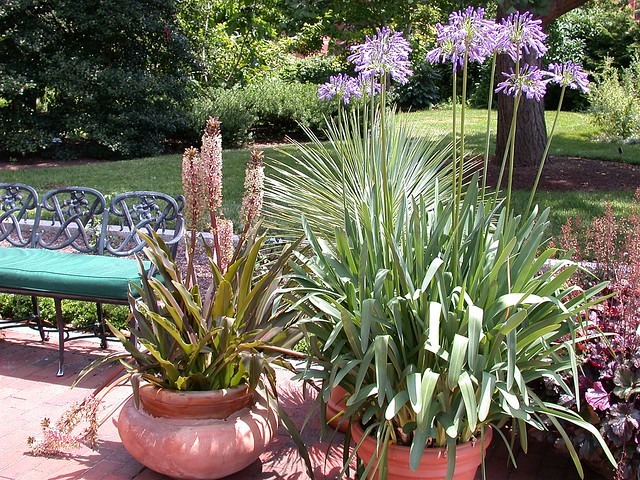
Eucomis (left) and Agapanthus (right)

Benches are hidden between large potted tropicals (Mussaenda)
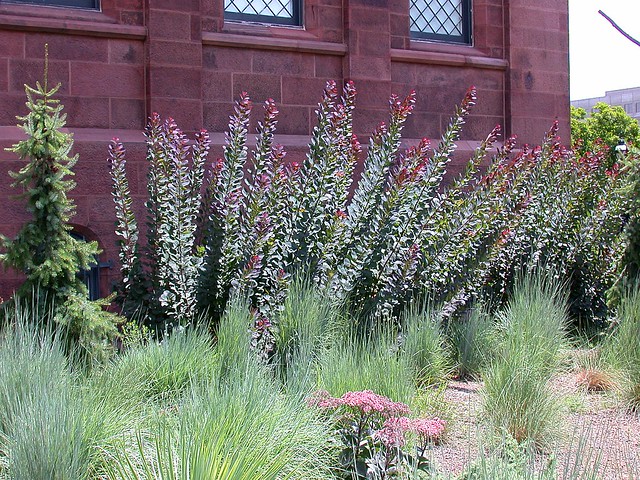
Cotinus
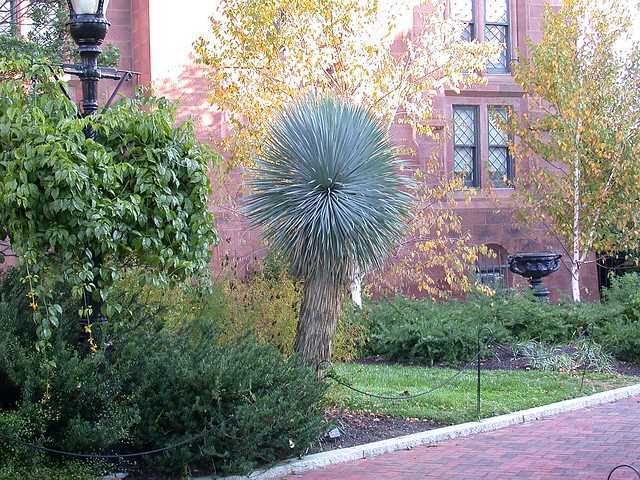
Yucca rostrata
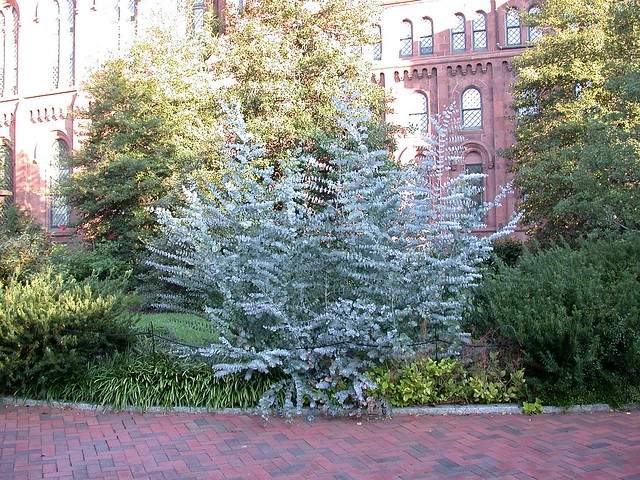
Eucalyptus
I've gotten a lot of questions about the Haupt Garden's wollemi pines (Wollemia nobilis). A "living fossil" discovered alive in Australia only 20 years ago (and once so rare they were displayed in locked cages), this species has been trialed in many gardens on the east coast, with little success. Specimens planted in the Haupt Garden several years ago had done quite well after a series of warmer-than-average winters and more than doubled in height, but this past winter they were finally tested by temperatures in the single digits and the results weren't pretty. The trees turned brown and when it was clear they were dead they were cut down, but this summer I was pleased to see both re-sprouting from the stumps.
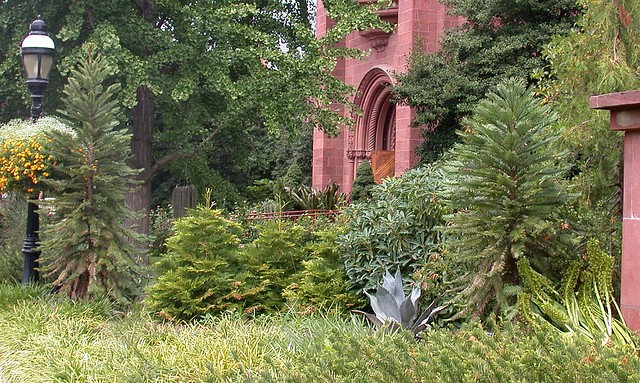
Wollemia nobilis (August 2011)
Wollemia nobilis (October 2012)
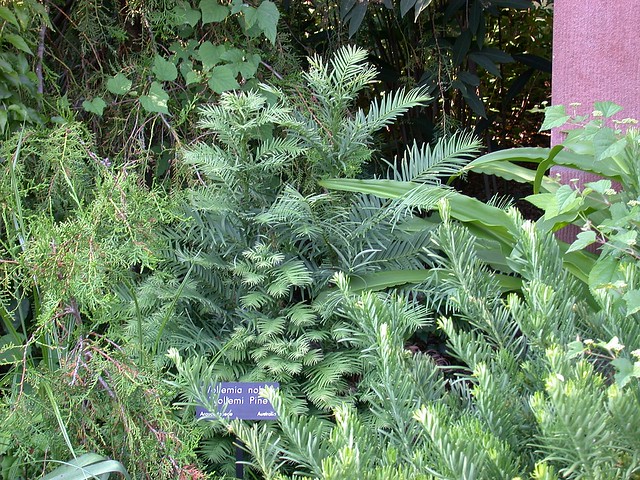
Wollemia nobilis, regenerating from stump (July 2014)
To the west, towards the Freer Gallery, the Moongate Garden was inspired by the Temple of Heaven in Beijing, China. The garden is designed to be serene and relaxing with a large expanse of granite and water, and trees and shrubs surrounding the garden provide a strong sense of shelter and privacy. The granite of the Moongate is softened by a large specimen of Edgeworthia chrysantha that perfumes the garden in early spring.
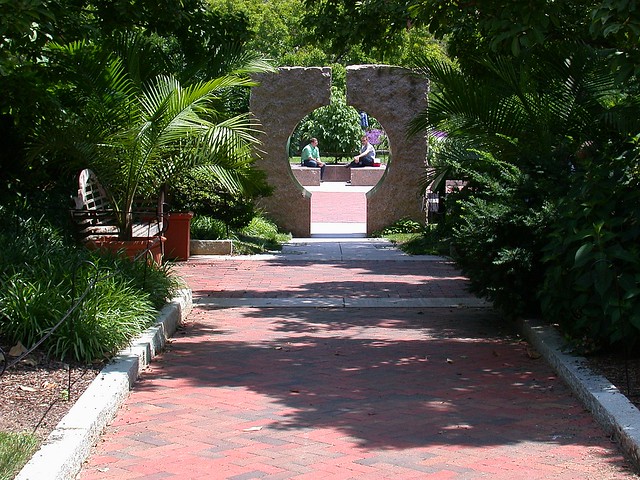
Moongate Garden, looking in
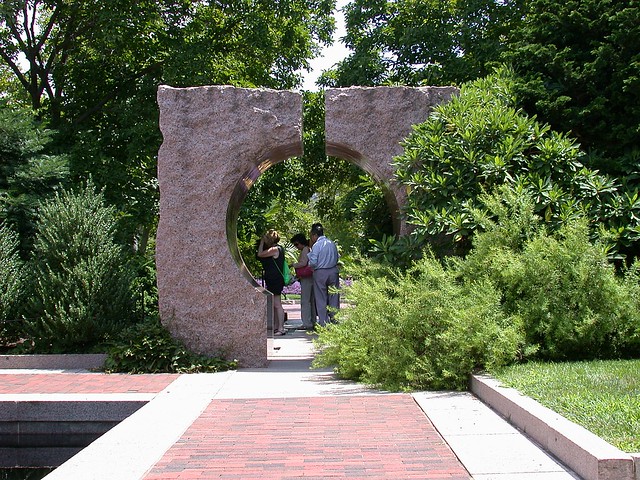
Moongate Garden, looking out
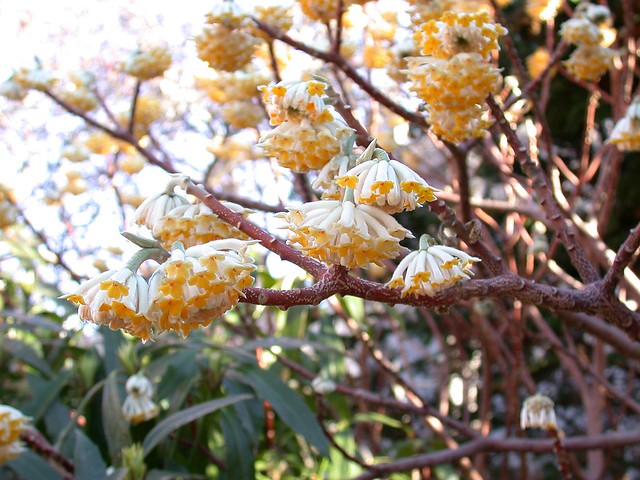
Edgeworthia chrysantha (March 2014)
Just past the Moongate Garden, a walkway running between the Freer and Sackler Galleries of Art is massed with a veritable jungle of tropical plants, planted in the ground and in containers.
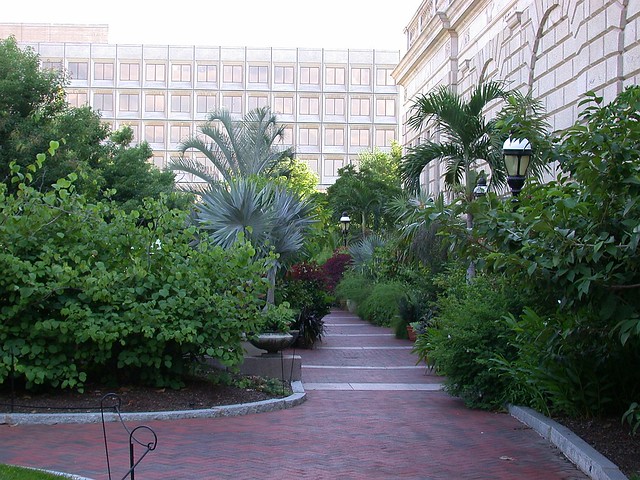
Tropical walkway
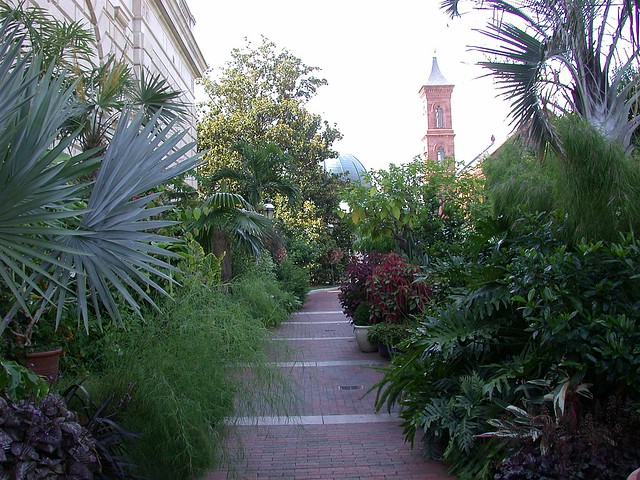
Tropical walkway
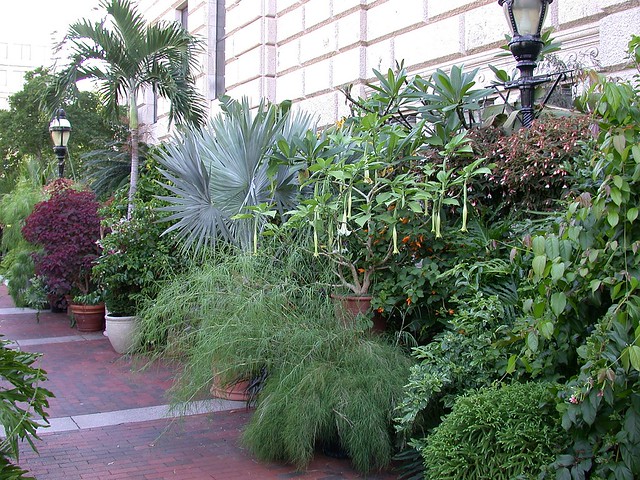
Tropical walkway
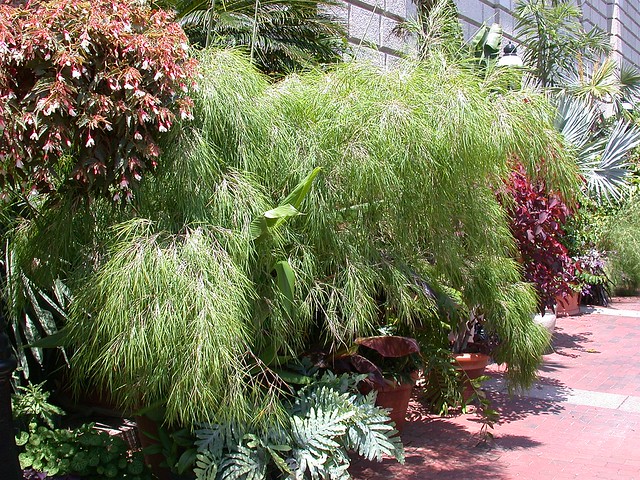
Bamboo
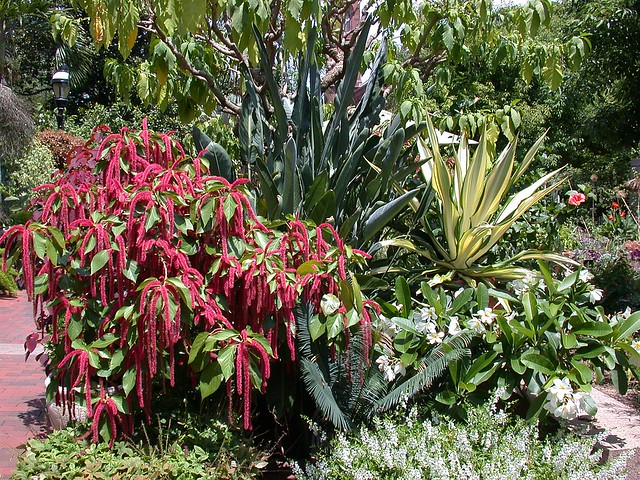
Tropical plants in containers
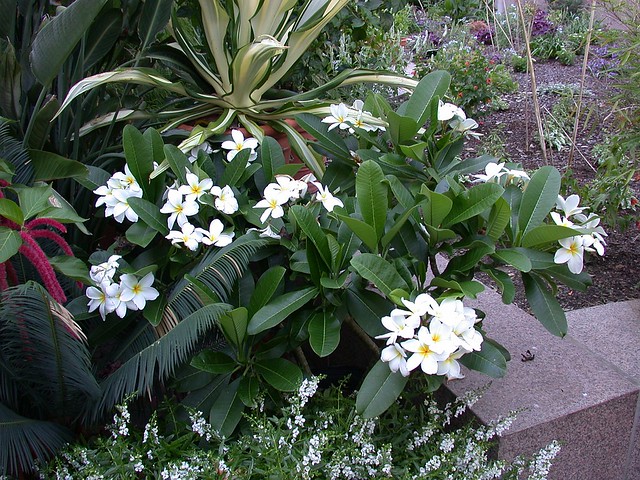
Plumeria

Strophanthus preussii
My more recent walk took me to the other side of the Haupt Garden to the Fountain Garden, where the sound of splashing water is a welcome distraction from the noises of the surrounding city. Where the garden approaches the (currently closed) Arts and Industries Building, a statue of Spencer Fullerton Baird, the first curator and second Secretary of the Smithsonian Institution, stands in front of one of its side entrances. The gardens closest to Art and Industries have only recently re-opened following major renovation work on that building; it will be interesting to see what Smithsonian Gardens staff do with this newly available space!
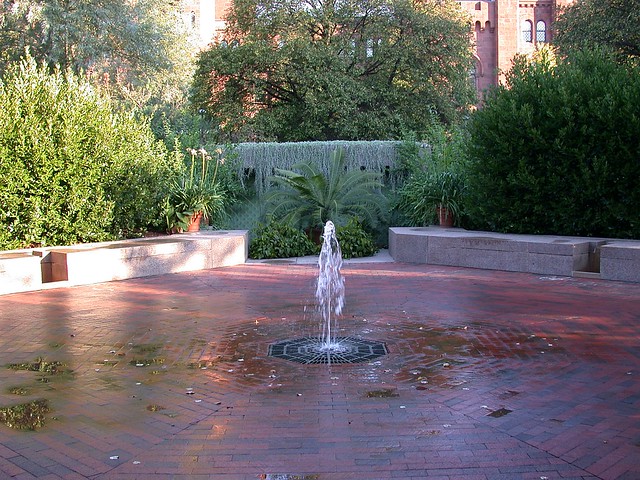
Fountain Garden
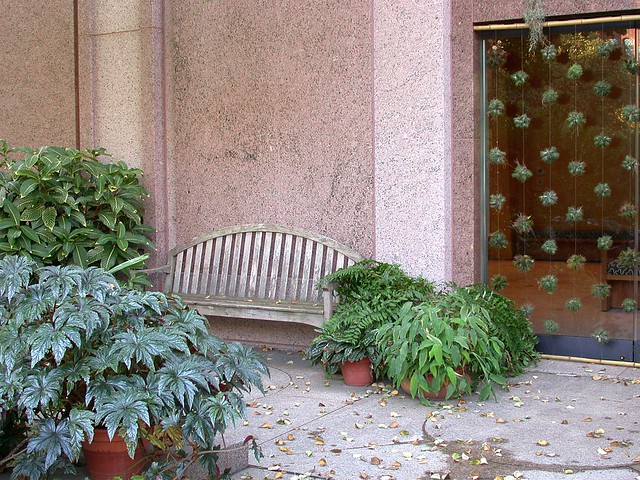
Entrance to National Museum of African Art
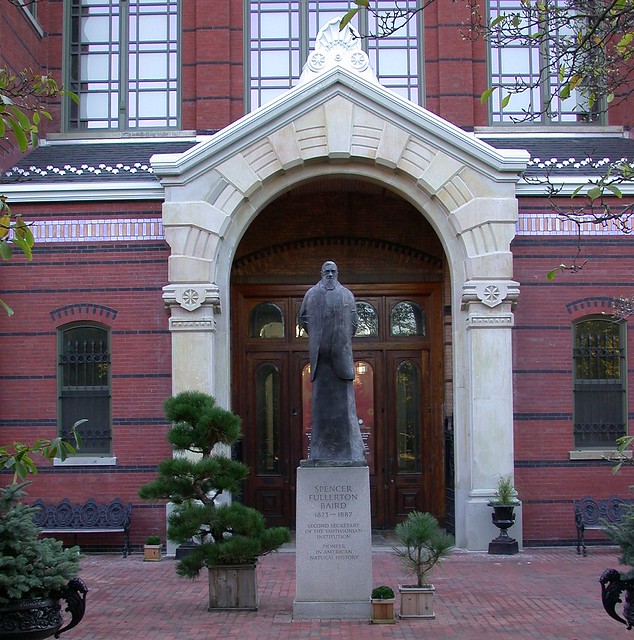
Spencer Fullerton Baird statue
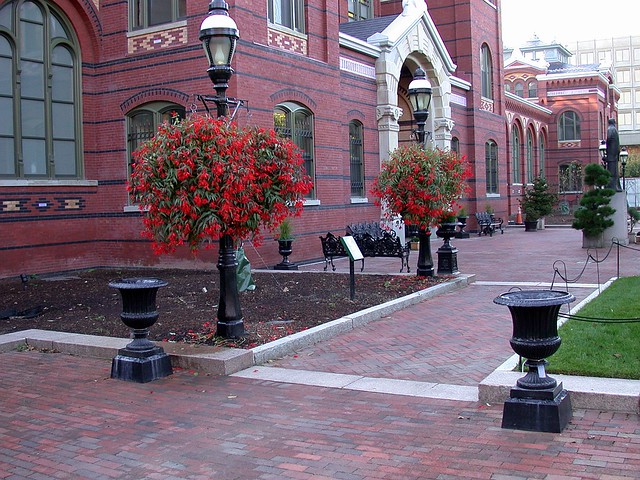
Begonias, Arts and Industries Building
As an epilogue to this series, my October stroll took me back through the Ripley Garden (see part 2 of this series), which was likewise still looking pretty darn good so I'll end with a few photos from that garden:
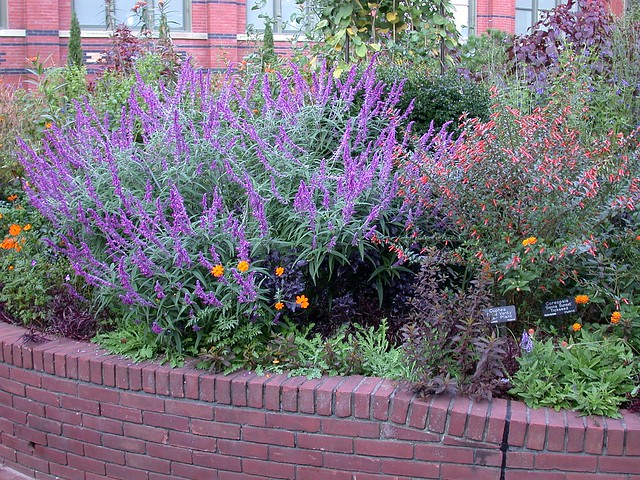
Salvia and Cuphea, Ripley Garden
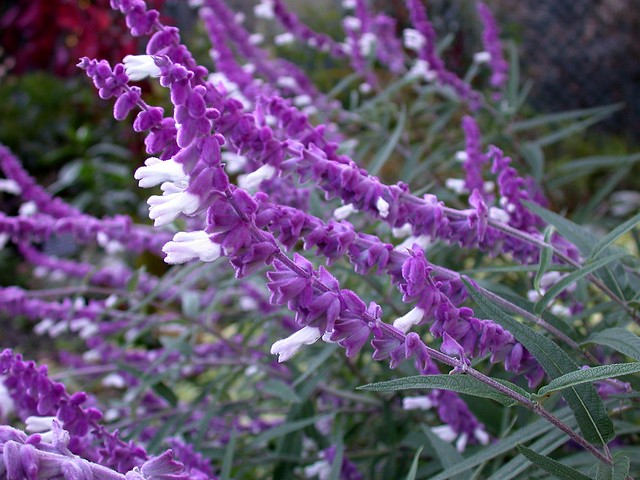
Lovely late season color from Salvia leucantha in the Ripley Garden
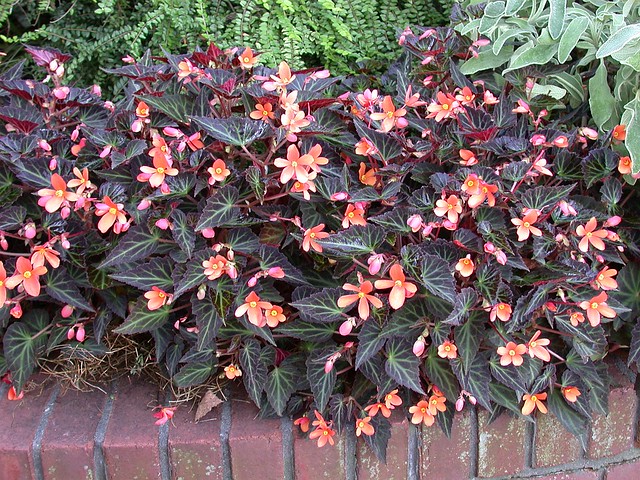
Begonia 'Sparks Will Fly', Ripley Garden
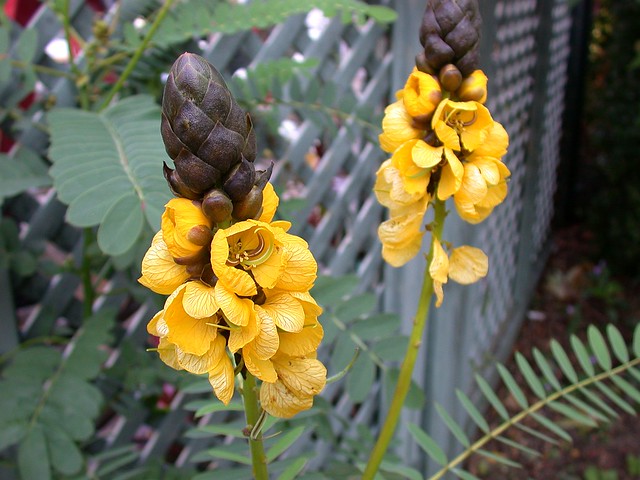
Senna didymobotrya, Ripley Garden
Resources
Smithsonian Gardens website
Map of Smithsonian Gardens on the National Mall
Smithsonian Gardens on Facebook
Enid A. Haupt Garden
For my full set of photos: Smithsonian Haupt Garden 2014
Did you like this post? Please click on the share buttons below to share on Facebook, Twitter, or Pinterest!

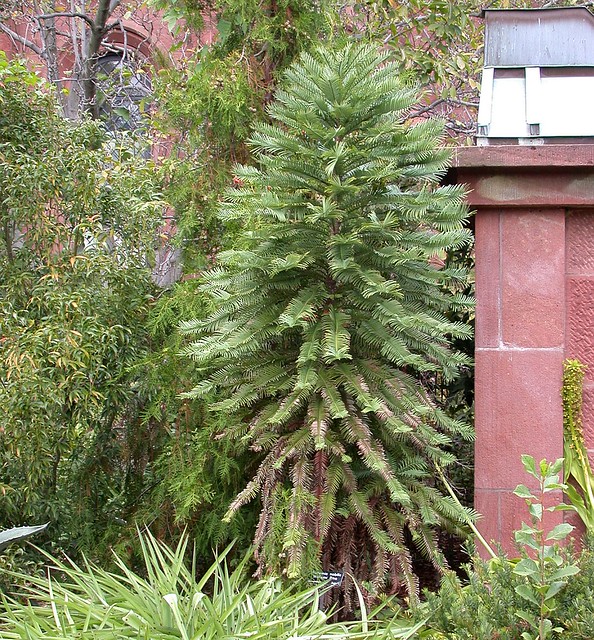
I enjoyed this post very much. So glad to see the Wollemia resprouting. They've been planted here on the west coast too, for example, there are a handful growing in the ground at the Tacoma Zoo. You make me want to go back and revisit the Smithsonian. Last time I was there was over 20 years ago, when my son was 10, and we concentrated on what was inside the buildings.
ReplyDeleteI was just there!! I visited the White House gardens that were open to the public in mid October and then I walked along the mall to see the other gardens and they all still looked good. I met Janet Draper (head gardener of Smithsonian gardens) at the butterfly habitat garden and she was frantically getting the tropicals ready to bring them in out of the expected frost. I couldn't get over the Solanum quitoense that was laden with tons of orange fruit. I am planning to do a blog on the White House gardens.
ReplyDeleteEnjoyable post John. The garden has a very nice mix of interesting plants, even the temporary ones the arrangement has been done well. Glad to see the wollemi pines have re sprouted.
ReplyDeleteI love the Smithsonian gardens. :o) I love how tucked away many of them are. I've enjoyed reading this series. Thanks for posting it!
ReplyDeleteJohn, I really enjoyed this post. I am a native plant gardener, but I very much appreciate looking at the world of gardening through your eyes for a while. I really like the Smithsonian Gardens, and I am glad to see them so well celebrated here in your words and photos!
ReplyDeleteDeeply appreciate your work. I will have a basis for comparison for next year's visit. Many thanks for sharing!
ReplyDeleteOh my goodness ... the Secret Gardens are now public knowledge. ..smile! This is one of my favorite places to spend quiet time. My dad's office used to be in the Smithsonian Castle. The Mall was my playground, so to see how this public space has evolved,as I sit and reminisce about wandering on hot summer days is awesome. The Haupt garden is the perfect place of peace. Thanks for sharing John....
ReplyDeleteOne day, I must visit our nation's capitol and see these wonderful gardens! Thanks for the visual tour, it was amazing!
ReplyDeleteBeautiful! Enjoyed the virtual tour of this lovely garden. Mexican sage is a personal favorite of mine. Glad you included it.
ReplyDeleteAnother great post. I had meant to suggest to my niece that she visit the gardens while she was in town. Forgot to do so but just sent this to her now. Hopefully she'll see them next time she's here. I look forward to visiting them again, too. (I first saw and fell in love with Brugmansia [Angel's Trumpet] there. Now I have a half-dozen large containers of them that we haul in and out of the basement every year.) Autumn seems like the best time to visit the gardens.
ReplyDeleteThanks again, I learn a lot from your always interesting posts. Much appreciated!
Thank you everybody for reading and commenting on this blog post--definitely one of the ones I've enjoyed "researching" the most! There are a few more Smithsonian gardens I still need to get to, but they'll have to wait until next year!
ReplyDelete